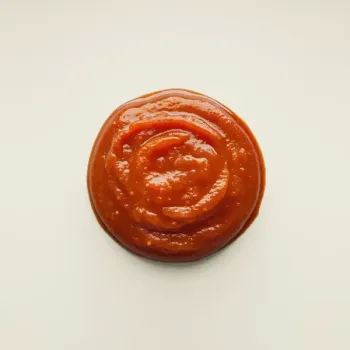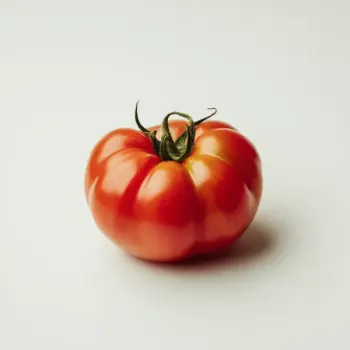Marinara Sauce vs Tomatoes refers to a comparison of the culinary uses and differences between the seasoned, cooked Italian marinara sauce and fresh, raw tomatoes in various dishes such as pasta, pizza, and soups.

Marinara Sauce is a classic Italian tomato sauce that's seasoned with garlic, onions, and herbs such as basil and oregano. It's a versatile base for many dishes, offering a rich, cooked down flavor.

Tomatoes are a juicy, red fruit commonly treated as a vegetable in culinary uses. They come in various varieties and can be eaten raw or cooked, providing a fresh, tangy taste to dishes.
Marinara Sauce is a prepared condiment that's been seasoned and cooked, offering a complex and rich taste. Tomatoes, in contrast, are a raw ingredient that can either be the star or a supporting component in a dish, with a flavor profile ranging from highly acidic to sweet, depending on the variety.

Your ultimate Recipe Box, Meal Planner, and Cooking Class all in one
Best used in classic spaghetti marinara, lasagna, and chicken parmesan, marinara sauce provides a robust, herby backdrop. Use it to ensure a well-rounded and deep tomato flavor in your pasta dishes. Fresh tomatoes shine in pasta pomodoro, penne alla vodka (where they're blended into a sauce), and bruschetta pasta. They bring a burst of freshness and are perfect for lighter, summer pasta dishes.
Ideal for a classic Margherita or a New York-style pizza, marinara sauce provides a foundation that's rich in flavor and perfect for complementing the cheese and toppings. Sliced fresh tomatoes are excellent for a lighter pizza, such as a Caprese or a white pizza, where their fresh and slightly acidic taste can really stand out.
Marinara sauce can be a quick flavor booster in soups and stews like minestrone or Italian sausage stew, adding depth and complexity with minimal effort. Whole, diced, or crushed tomatoes are essential in building the base of soups and stews, such as tomato soup or beef stew, where they add a bright and tangy flavor.
Marinara sauce can substitute raw tomatoes when a richer, more developed flavor is desired in a dish. Conversely, fresh tomatoes can replace marinara for a lighter, fresher taste, but additional seasonings may be required to achieve the desired flavor complexity.
Marinara sauce often has added oils and seasonings, which can increase its calorie content, while fresh tomatoes are low in calories and provide beneficial nutrients like vitamin C and lycopene.
| Nutrient | Tomatoes ( per 1/2 cup ) | Marinara Sauce ( per 1/2 cup ) |
|---|---|---|
| Fat | 0.2g | 2g |
| Sodium | 9mg | 480mg |
| Protein | 1g | 2g |
| Calories | 16 | 70 |
| Carbohydrates | 3.5g | 12g |
Yes, but you may need to cook them down with seasoning to approximate the flavor of marinara sauce.
Raw tomatoes are lower in calories and sodium, but marinara sauce can be part of a healthy diet when used in moderation.
Absolutely, marinara sauce can be used as a flavorful alternative to traditional pizza sauce.
Simmer fresh tomatoes with garlic, onions, and herbs until thickened to create a simple marinara sauce.
Plum or Roma tomatoes are often preferred for their lower water content and richer flavor.